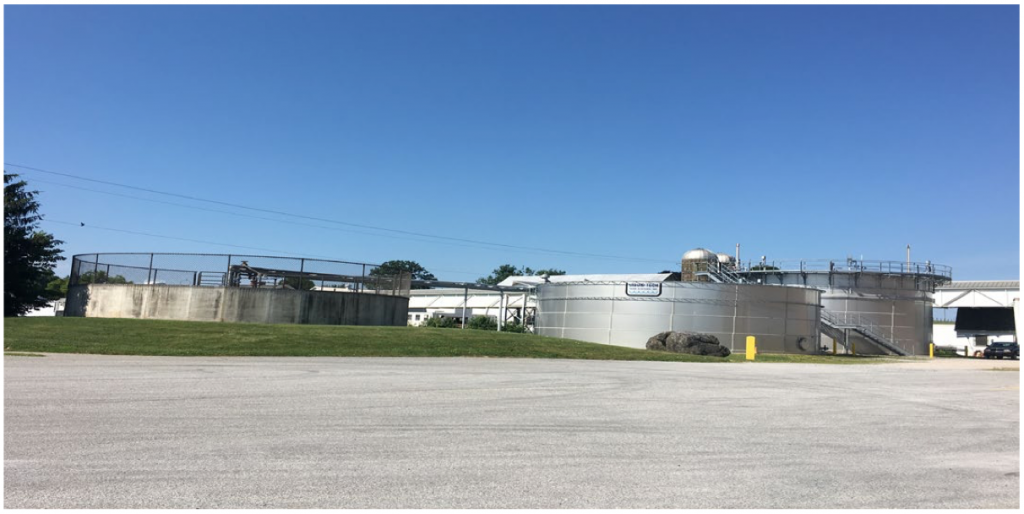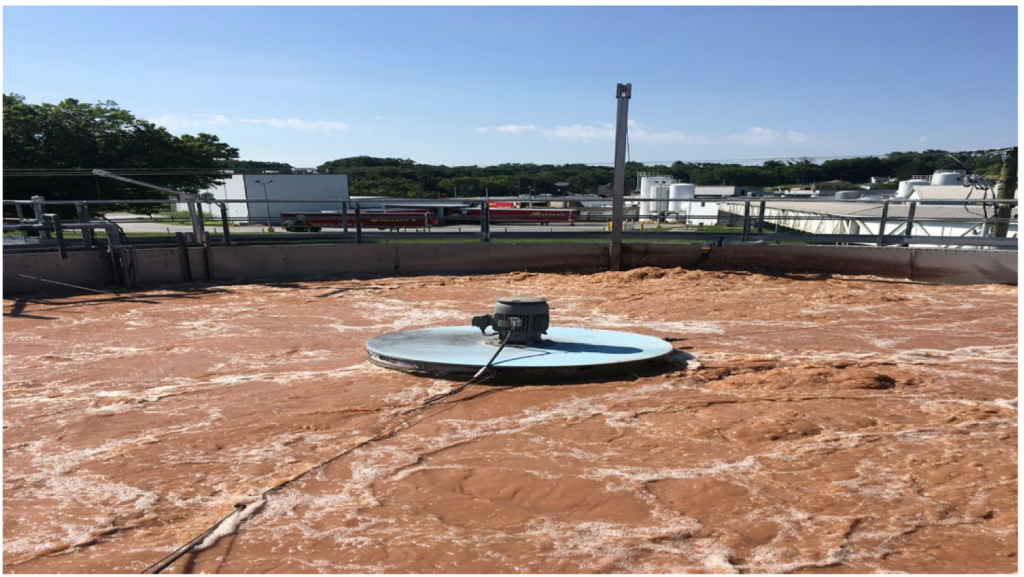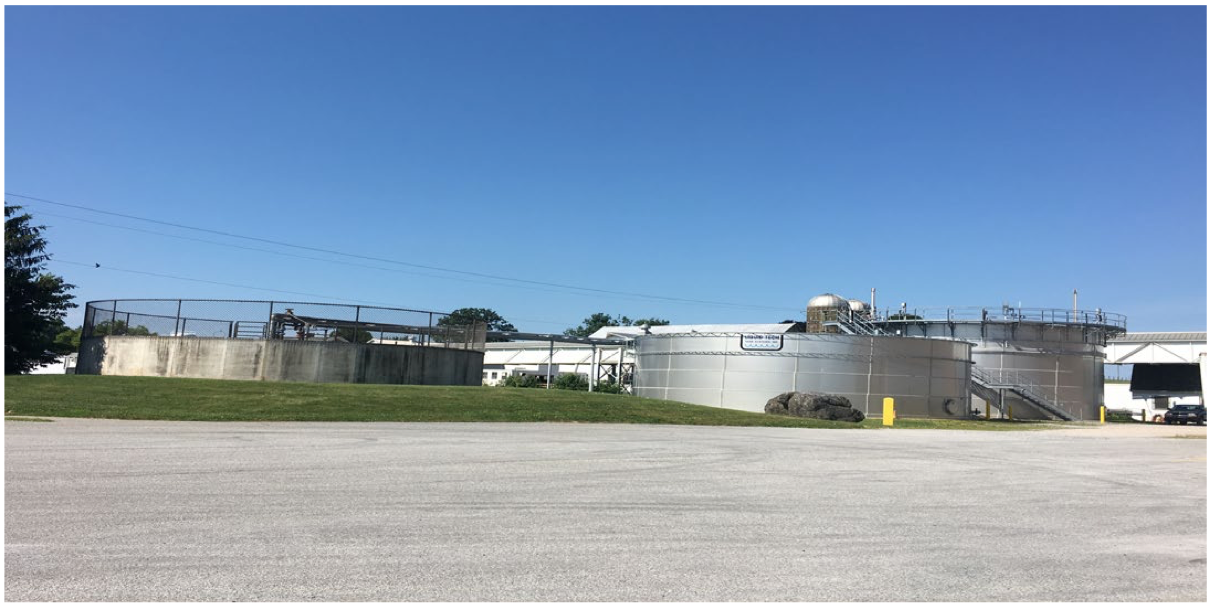Industrial WWTP .05 MGD
Managing toxic loadings at industrial wastewater treatment facilities can be challenging. Influent from food processing industries can introduce harmful cleaning products. The book Wastewater Bacteria, by Michael Gerardi, explains cleaning chemical surfactants can be harmful to the cell membranes and cellular proteins of wastewater microorganisms.1
Biota with damaged cellular structures may be unable to properly metabolize the organic substrate and nutrients in wastewater.
Bioaugmentation can be used to mitigate the harmful effects of toxicity in wastewater systems. Implementing a concentrated and diverse community of microorganisms can increase functional plant biomass reducing process recovery time from a toxic hit.
The following case study outlines bioaugmentation with BioLynceus® ProBiotic Scrubber® II (PBII) and Candy Carbon® (CC) at an industrial sequencing batch reactor (SBR) plant.

Figure 1. Case study industrial wastewater plant design. The facility processes dairy wastewater with a single SBR tank (right), sludge holding basin (middle), and equalization tank (left). The plant experienced toxic loadings that inhibited the biological treatment.
The 0.05 MGD mechanical plant at a commercial dairy was experiencing frequent toxic hits that were killing off the biology in their treatment process (Figure 1). Highly concentrated loadings of disinfection chemicals and surfactants were introduced to the system following equipment cleanings at the dairy.
This regularly disrupted the biological treatment at the facility. Because of the toxic loadings, the plant effluent quality was greatly reduced. After consulting a trusted wastewater expert, the operators at the plant were advised to augment their system with new biology to restart the treatment process.

Figure 2. SBR tank processing high strength dairy wastewater.
A regimen of PBII and CC was implemented to get the biological treatment going after a toxic loading. PBII supplied the plant with a functional community of microorganisms to facilitate wastewater processing, and the CC provided a readily available carbon source for the added biology.
The goals of bioaugmentation were to (1) improve the treatment process recovery time and (2) stimulate the biological treatment by increasing biomass.
Soon after the initial inoculation of PBII and CC, the wastewater operators commented on the fast recovery time and efficiency of their restored biological treatment.
The plant was functioning properly after just a few days of treatment. Additionally, bioaugmentation with PBII and CC improved the effluent quality discharged by the facility.
Working with BioLynceus® and their affiliates helped the SBR operate efficiently and restart with ease after toxic loadings.
BioLynceus® ProBiotic Scrubber® II and Candy Carbon® help mitigate wastewater plant toxicity.


